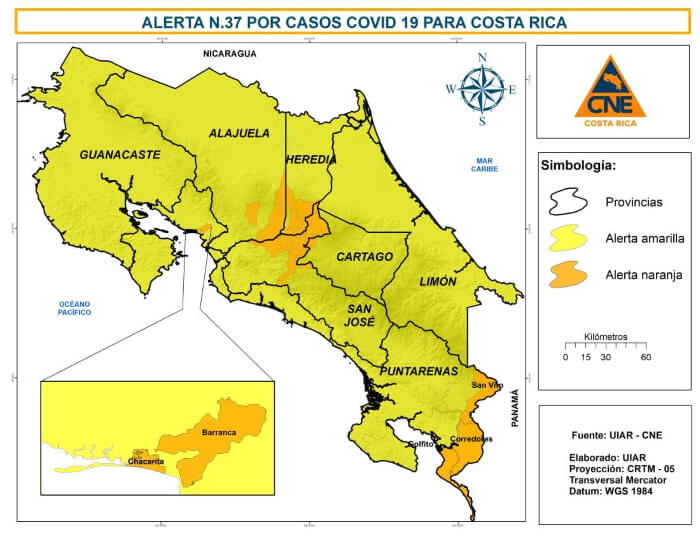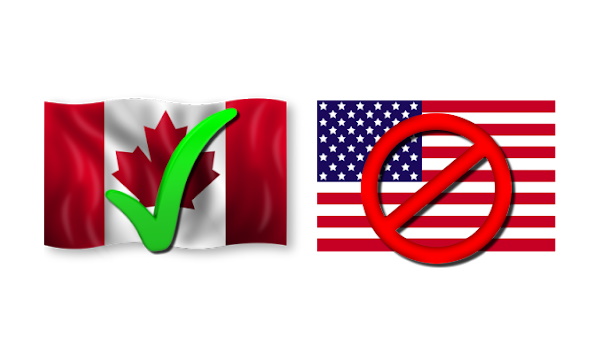There is much confusion regarding the opening of the borders to tourists and the government's attempt to restore the economically devastated tourism sector by opening air travel to tourists on August 1st.
Contradictory statements, lack of consultation with leaders in the relevant business sectors, and a lack of understanding of how international tourism functions have all contributed to this confusion.
On August 1st the government of Costa Rica removed air travel restrictions for tourists from specific countries to enable entry to the country once again after closing the borders back in March. The closing was a legitimate attempt to reduce the global spread of SARS Cov2 and the resulting disease now named Covid-19.
As of August 1st, the government announced their plan to allow air travel from Canada, the United Kingdom, Austria, Belgium, Czech Republic, Denmark, Estonia, Finland, France, Germany, Greece, Hungary, Iceland, Italy, Latvia, Liechtenstein, Lithuania, Luxembourg, Malta, the Netherlands, Norway, Poland, Portugal, Slovakia, Slovenia, Spain, Sweden and Switzerland. Sounds pretty good.
Even US citizens can visit Costa Rica, provided they fly from one of the above listed countries and have remained in that country for 14 consecutive days prior to their flight to Costa Rica. The reason given for not allowing direct flights from the US is due to the increasing numbers of positive test results daily in certain states. Most of the countries allowed entry to Costa Rica, currently restrict US citizens, so essentially Americans are not welcome, despite the US tourists being responsible for more than half the tourist visits to the country in previous years.
Prior to August 1st, American Airlines and United Airlines for example, were flying to the International Airport in San Jose several times a week, mainly for business travelers and expats who had remained in Costa Rica who then wished to return to their home country. Americans, Canadians and Europeans were able to make connecting flights via the US to return home.
Under the new guidelines residents of Canada, the UK and other above listed countries in the EU must undergo a PCR-RT test for Covid-19 and receive a negative result within 48 hours before flying. It is unclear whether this is even possible, since Canada restricts who is eligible to receive a PCR-RT test as do many EU countries. And at what cost?
Just this week during the statements made to the House Oversight and Reform Subcommittee on Select Coronavirus Crisis in the US, Admiral Brett Giroir, Asst Secretary of Deptartment of Health and Human Services stated that registered testing labs, as of last week, could get results within 2 to 3 days. Other non PCR-RT tests are available that allow test results in a few hours, but it is not clear if those would be accepted.
In Costa Rica if you request a Covid test you are required to self quarantine for 14 days, whether results are positive or negative. This is attributed to need to restrict the number of tests given due to the lack of sufficient test kits available in the country.
The result is if a tourist wants to travel to Costa Rica, and books a flight and hotel to do so, they won't know if they can make the trip until 48 hours prior to leaving, when they receive the results of their test. What happens then regarding refunds and cancellation of the trip should the test turn out positive at that point remains to be clarified.
Assuming you can obtain the proper test result in the required time, you must also obtain insurance coverage to cover expenses should you become sick during your trip. In other words mandatory vacation health coverage.
The latest policy requires the travel insurance must be purchased from the National Insurance Institute (INS) in Costa Rica. The form is available here
Travel insurance must cover the possibility of COVID-19-associated medical expenses of $20,000 and lodging costs of at least $4,000, according to the Costa Rica Consulate. They say the cost of premiums vary based on age, increasing for older adults, lengthier stays, or multi-person trips. Premiums for a two week stay range from $280 for young adults to over $900 USD for a person over 70 years old.
Your insurance must cover your planned duration of stay, so 14 days insurance will get you a 14 day entry stamp at Immigration.
Tourists will not be required to self-isolate (quarantine) upon arrival to Costa Rica. Costa Ricans and residents are not so entitled. No matter where they come from, they will receive a 14-day home isolation order, however they do not need to show a negative PCR-RT test nor purchase travel insurance. So if you are a temporary resident planning a 30 day visit you will spend the first 14 days of that time inside your residence.
All permanent or temporary residents who present their DIMEX will be allowed to enter Costa Rica, so long as they’re coming via a flight from an authorized country in which they’ve remained for 14 days. It is not clear if the same rules apply for those awaiting approval of temporary residency.
What impact will this have on real estate, considering foreigners are able to purchase property or a home or condo, but then may not be allowed to use it, without having secured residency. Many to choose to do so, but it has not previously been a requirement to make a purchase, and many who do purchase a vacation property may not be able meet the current qualifications to obtain residency.
All tourists are also required to complete a questionaire prior to arriving in Costa Rica. The questionaire is a digital epidemiological form (Pase de Salud) and can be completed online here. To complete the form you need to fill in your INS insurance policy number and submit a pdf or jpg of your covid test results.
The form includes questions regarding your personal medical history which may or may not violate rights of individuals from other countries. No matter, no form no entry according to the Consulate.
While most of the countries allowed to fly here as of August 1st remain in various stages of lockdown, some countries such as Spain are open for business.
Canadians are not usual travelers to Costa Rica during August or September, and there are no scheduled flights from Canada until September, so they have time to digest the new rules, and begin planning their winter vacations. Guanacaste is a top destination for snowbirds, travelers visiting during their winter months, but will they continue to do so under the current guidelines? Time will tell.
All these rules were announced just days prior to opening flights, so it takes time to get that information to travel agents, airlines, embassies and border agents around the world, and then disseminate the information to travelers. Given the high cost of insurance, which can be more than the actual trip for a family of four, and that there are many tourist destinations with far less strict regulations, the rules themselves may impact tourism for Costa Rica well into 2021.
Requiring mandatory health coverage alone is step beyond the norm, but given the objective of reducing risks to the local health care system, understandable. Making the INS the only insurer recognized to offer the required insurance goes well beyond what should be considered reasonable.
Several national trade organizations have said the same and the President has stated they will review the process as they move forward. Maybe next week, maybe next month, but they should try to do so immediately if they wish to avoid a complete collapse of the tourism sector for the remainder of 2020.
The fact is many of those residing in Guanacaste are reliant on non existent tourists, seasonal residents who are banned from entry, foreign property owners and tourism from elsewhere within the country. It is not just the hotel and restaurants that are affected. Housekeepers, gardeners, property managers, local stores, home improvement businesses, markets, pharmacies, automotive repairs, are all negatively impacted.
Up until a few weeks ago travel was also deterred within the country, based on the constantly changing zone restrictions. People who live in a Yellow Alert zone were unable to drive to work if the place of business was in an Orange Alert zone, with boundaries based on entire cantons or districts.
Tourists within the country were barred from freely traveling on the weekend without a hotel reservation and even then were faced with restricted restaurant hours and beach access. Why bother?
The good news is that has of August 1st, most of the country is miraculously under a Yellow alert, easing restrictions for the majority of the country. The government has made it clear that these changes may not be permanent.

Things are especially noteable in Guanacaste where the impact of restrictions has hit hard, despite the relative low numbers of those hospitalized compared with the the district of San Jose and other regions. The central government points to the low rate of fatalities as being a direct result of the closure of the borders. While this may be true, despite all the restrictions and forced closing and fines, the fatalilities attributed to Covid-19 continue to rise, throughout the country.
It should also be noted that all scheduled flights bringing tourists into the country are flying into San Jose, not Liberia. San Jose remains under Orange Alert, whereas Liberia is under Yellow. Why would people who have been made to follow extreme provisions to get here, fly into the one area in the country with the highest rate of Covid-19 cases?
It is now apparent that should the government of Costa Rica continue with the policy of travel restrictions they have in place, they will effectively eliminate the chance of foreign tourists arriving for the remainder of 2020, assuming of course anyone is even thinking about foreign travel under the current global economic meltdown.
Costa Rica has the ability to improve the situation before the new year, but it will require a drastic change in thinking and a more open planning process in consultation with all leaders and organizations of industry and trade, beyond just the Ministry of Health.
Maybe its time to open business and remove restrictions and let the majority of people of Costa Rica get back to work and show they are capable of taking care of themselves and those around them. The government can then focus their efforts on those most at risk, improving health management and preparedness for other threats including heart disease, diabetes, seasonal issues such as dengue, and other unforeseen environmental risks to the health and welfare of the country.
Further economic damage will only increase the burdens on the health care system and on the individuals they are trying to protect.
We all need to put food on the table, as a start.










